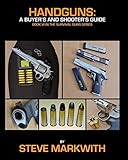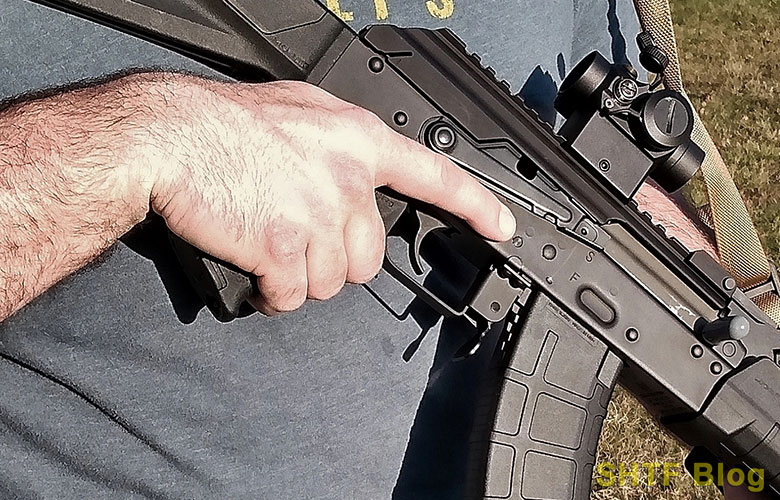
This post is an examination of trigger discipline and control as it pertains to safe gun handling and marksmanship. With millions of first-time gun owners in circulation the safety aspect is worthy of coverage, and the nuances of trigger release may have value for shooters with more experience. But let’s kick it off with safety, since we all have an obligation to follow “the rules.”
Gun manufacturers normally include a list with their packaging, the NRA has their own, and many law enforcement and military outfits teach condensed versions consisting of four widely recognized mandates. There are others related to storage, etc., but the Universals provide a fail-safe pathway – if followed to the letter.
Table of Contents
4 Universal Rules of Firearms Safety
- Treat all firearms as though they are loaded – always!
- Never point a firearm at anyone or anything you do not intend to destroy.
- Keep your finger off the trigger until the firearm is on target.
- Be sure of your target and backstop.
For beginners, once the safety aspects are fully understood, hands-on comfort with the operation of the firearm should precede any shooting. This familiarization period also provides an opportunity to revisit Rule #3 and the position of the all-important trigger finger.
What Proper Trigger Discipline Means
Trigger discipline means minding the trigger for safety purposes, being aware of your finger placement and preventing accidental discharge (AD).
A personal observation based on several decades of daily range operations: Those with little-to-no experience will invariably wind up with a finger on a trigger, usually within seconds of handling the firearm. Thus, along with the others on the list, Rule #3 will go a long way toward preventing what we in the business refer to as a “negligent,” or accidental discharge.
So, early on, find a home for the tip of the trigger finger that can provide a tactile reference point, such as a frame contour, pin, or edge of a trigger guard. Defensively, this precaution could also prevent an AD caused by the “startle reflex”- caused when muscles contract involuntarily.
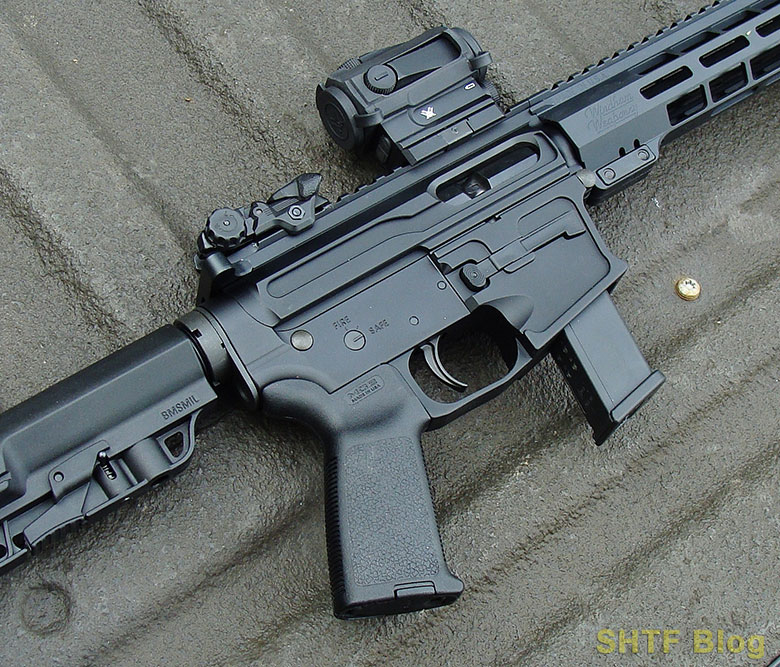
Examples of Bad Trigger Discipline
Many older Hollywood films serve as unschooled examples of sloppy gun handling and, as it turned out, some law enforcement agencies weren’t much better. During the wholesale switch from revolvers to semi-autos during the 1980s, some that based their selections primarily on improved qualification scores encountered immediate spikes in ADs.
The new genre of striker-fired “safe-action” pistols did offer more manageable triggers, but they also revealed Rule #3 training deficiencies; a situation that led to the appearance of Glock’s heavier “New York” trigger.
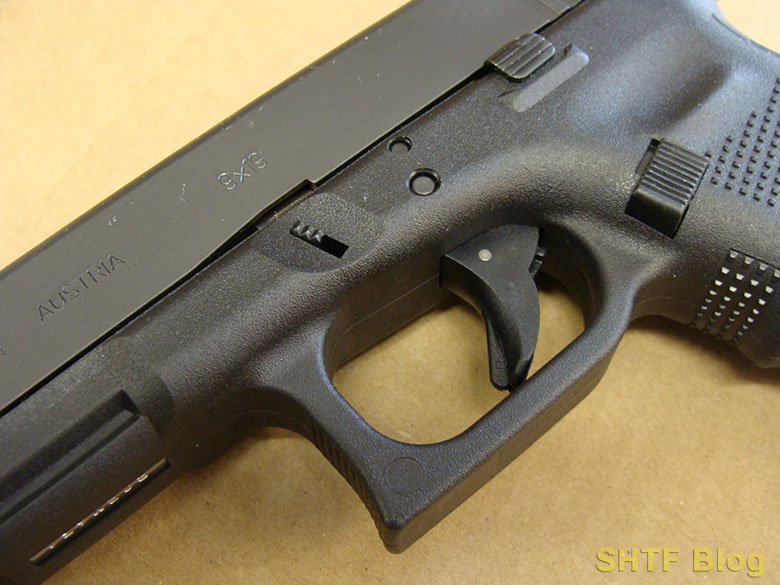
Regardless of the trigger system, marginal shooters are likely to suffer discipline relapses if subjected to stress. The solution is proper training supported through ongoing practice. This link offers a window into associated concealed-carry concerns: Concealed Carry Tips for Handguns.
Assuming the safety aspects are fully understood, it’s time to advance to a matter of great vexation to many shooters, both new and experienced; namely how to manipulate the firearm’s go-switch without disturbing its alignment with a target. Lot of psychology here!
How to Pull the Trigger
Since a firearm isn’t a staple gun, crunching its trigger will only lead to a miss. A proper release is more of a press (sometimes described as a squeeze), although the double-action technique (as in D/A revolver) is better described as a long, smooth stroke. Some instructors describe a release as “a surprise,” intended to counter anticipation.
In any case, we need to let the shot happen; not make it happen! The gun will recoil – so let it. We call this follow-through. If the handgun goes “click,” the sights shouldn’t jump. Good news here: Dry-fire practice offers a cost free means to refine the technique.
All Important Dry Fire
Dry fire boils down to trigger practice using an unloaded firearm. Some guns can be damaged through repeated dry firing, but many centerfires will survive. Dry firing a rimfire is generally a bad idea because its firing pin may damage the rim of a chamber. Fired cases offer some protection, but they’ll be quickly deformed, making snap-caps the better alternative, available at Optics Planet or on Amazon.
- Orange color makes them easy to spot and prevents mixing with real ammo.
- Teaches safe gun handling skills.
For those willing to invest the time, the only other requirements are a safe space, a makeshift target – and the quarantine of live ammunition! After acquiring a proper sight picture, consider this basic tenet: We need to release the trigger in such a manner that the sights won’t be disturbed when the “shot” breaks.
The regimen is contingent on the function of the gun.
Double-Action Revolvers
One great dividend of wheel guns: Whether empty or loaded, trigger function remains constant – not the case with most pistols. For defensive use, since the first thing that tanks under stress is manual dexterity, concentrate on double-action “shots.” With time to make a deliberate sporting-type shot, the hammer could be pre-cocked to single-action.
The trigger pull will be a much sweeter 2-4 pounds, fine and dandy for popping cans, but hairy during tense situations. Granted, the 10-pound D/A trigger-pull will be heavier but, if it’s pulled in one long continuous stroke, the hammer will eventually fall, ideally, without anticipation. Staging (with a pause) can defeat this advantage.
Done right it’s a controlled cycle both rearward and forward. The cylinder should smoothly rotate as the trigger travels rearward. If it spins as a blur, you’re yanking the trigger. If so, you’ll miss, most likely in the direction of your dominant hand. Easy fix: Slow down and smooth out.
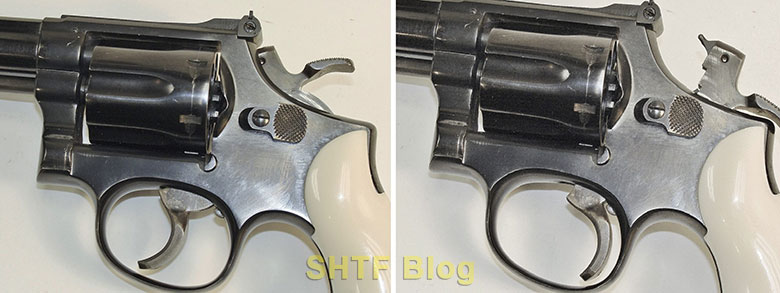
Double-Action Pistols
The above DA technique also applies to DA-only semi-autos and traditional DAs (like Beretta’s M-92/M-9). Since subsequent shots from the latter are fired via single action, add some pre-cocked SA presses. Also, the manipulation of any de-cocking levers. Mastery of a double-action trigger won’t happen overnight, and, for owners of traditional DA pistols, two different pulls are part of this puzzle.
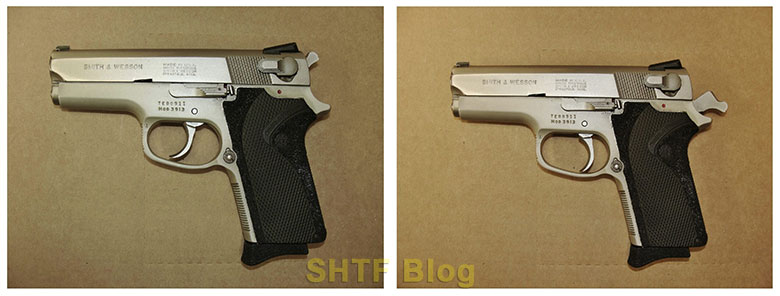
For all DA shooters: Like riding a bike, the technique is initially tricky but, once it’s ingrained, the smooth stroke is lurking in our psyche. If you lay off it a while you may be wobbly, so ongoing practice is important.
Striker-Fired & Single-Action Pistols (Along with Rifles & Shotguns)
The rapid ascension of striker-fired pistols – like the Glock – was largely attributable to their user-friendly triggers, which more closely mirrored the characteristics of many other firearm designs. For these systems, instead of a stroke, we’re after a controlled press. You could relate the sensation to a camera shutter, where mashing won’t work.
Taken to the extreme, we sometimes witness new shooters attempting to fire a handgun with their entire bodies. The effect occasionally resembles a major convolution induced by a high-voltage discharge. That’s anticipation!
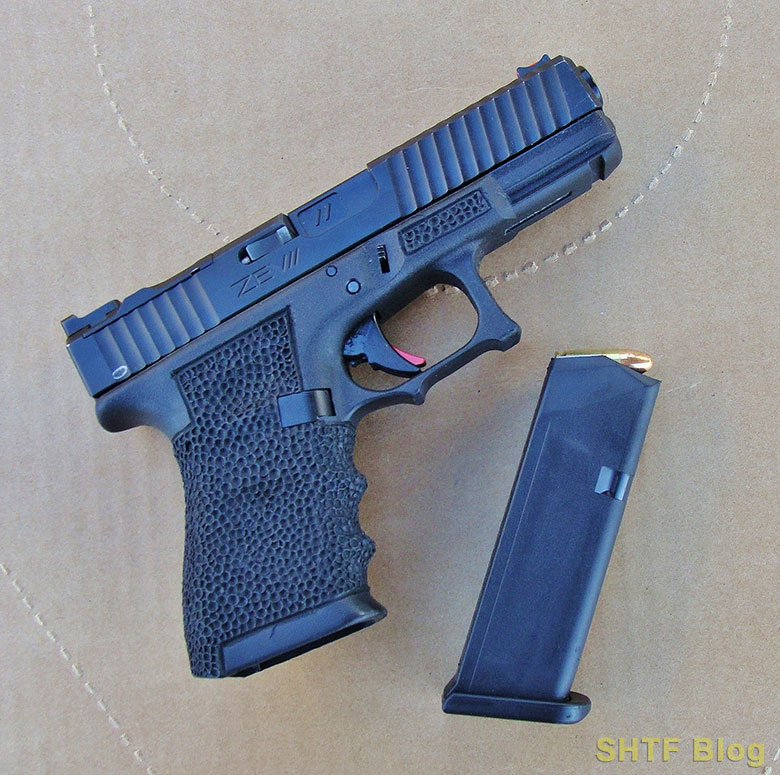
Dry firing offers a pathway to control, but many semiautos are problematic beyond their initial trigger release because most rely on reciprocation of the action for re-cocking. The fix is manual cycling between each “shot”. The process becomes much smoother if the magazine is removed so the gun won’t latch open during the cycle.
Here’s where magazine-disconnect system can be a minor hassle. However, the solution is easy: Just cycle the slide far enough rearward to accomplish re-cocking. This regimen also offers an opportunity to learn trigger reset (more on this shortly).
Lasers, etc.
If you own a laser-equipped firearm, its beam can serve as a useful trigger-control indicator. Assume a normal firing stance and dry fire. If the laser jumps, more trigger practice is in order. Or you can invest in a purpose-built system, recouping much of its cost through gas and ammunition savings.
Mind-Over-Matter
The big feat involves the exercise of proper trigger control whether the gun is empty or loaded – easier said than done! Consider this: The gun doesn’t care what we do. It’ll be just as noisy and kick just as much whether we shoot it smoothly – or not. Ideally, if a misfire occurs, there will be no muzzle movement at all. No sense burning through large quantities of precious ammunition until the trigger release feels “right” – the description commonly used to define a well-delivered shot.
Trigger FAQs
What is Trigger Wall?
Some triggers incorporate a bit of pre-travel before the release point, typically a distinct “wall.” Most military triggers have considerable “take-up” and are thus described as “two-stage.” Others, like tuned match-grade rifle triggers offer nothing beyond a distinct wall and are known as “single-stage” designs.
What is Trigger Break?
A press of the trigger through its wall leads to the “break.” To describe a clean release, imagine a 6” glass rod with its tip clamped in a vise, with the trigger finger hooked around its outer section. The idea is to gradually load on pressure until it snaps – or breaks. Military and defensive triggers are generally heavier, and many striker-fired designs have “mushy” breaks, often accompanied by some over-travel.
What is Over-Travel?
Defined as movement of the trigger beyond the break, some over-travel is common, and even desirable for defensive firearms. This stands in contrast to the triggers preferred by precision shooters, where an undisturbed break is the key to a well-placed shot. Most triggers in this category feature “stops”, and some can be adjusted to eliminate excessive over-travel.
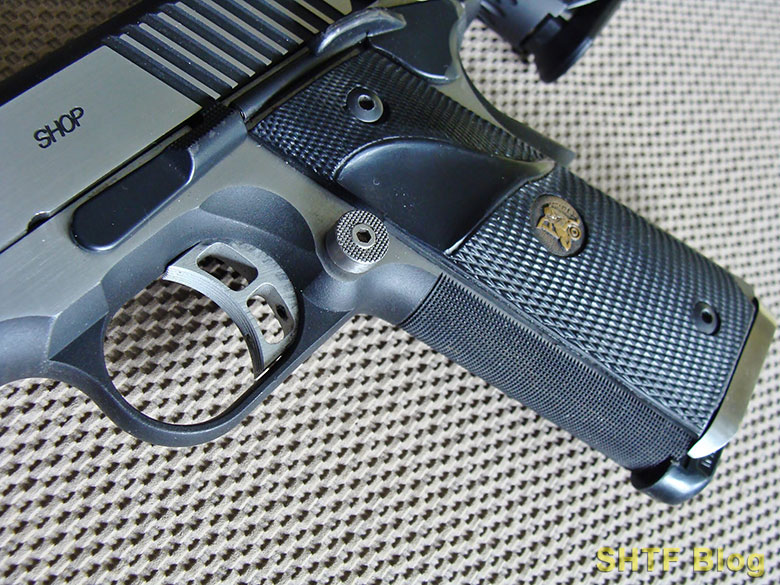
What is Resetting?
Reset is the point where a semi-auto’s trigger/sear assembly reengages the hammer or striker during the action’s firing cycle. Some firearms, such as Glocks, 1911s, and AR-15s, feature distinct tactile reset points. Others are more subtle or non-existent. DA-only pistols don’t offer one, so the trigger needs to travel fully forward between each shot, like DA revolvers.
Assuming your firearm has this feature, the reset trick offers a great way to master a proper release. Consistent acquisition of sear/trigger reengagement will optimize control to eliminate trigger-slapping (see below) and/or jerking. And the technique can be grasped through an extension of the above dry-fire exercise.
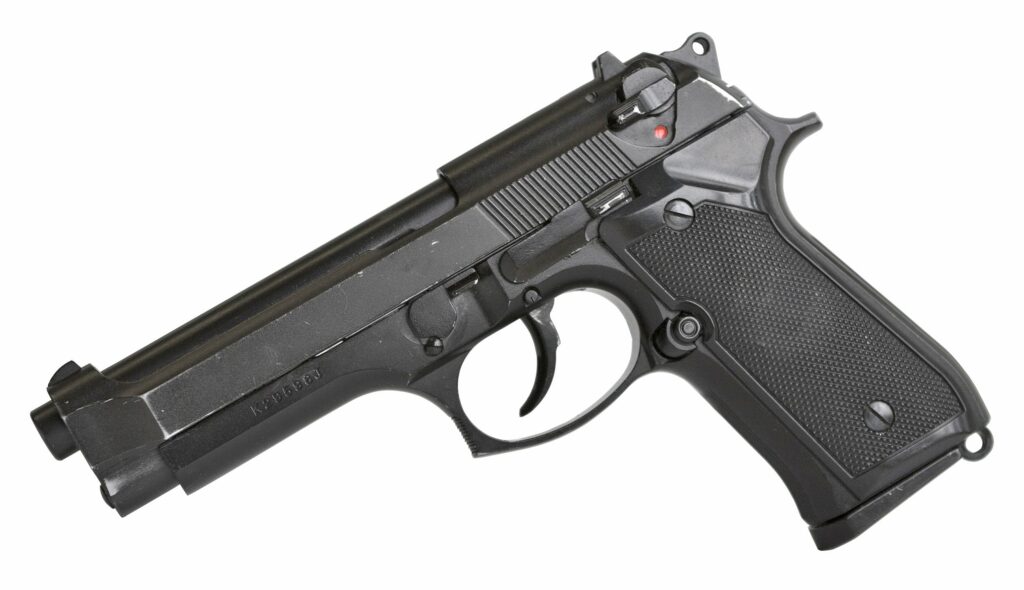
To acquire the mechanical connection, dry fire the first shot but don’t release the trigger. Instead continue holding it fully rearward while cycling the action with the support hand. Once a two-handed grip is reestablished, carefully allow the trigger to creep forward – just far enough for tactile reengagement. At that point stop and begin another trigger press. Repeat as necessary and work on stabile sight pictures.
Traditional DA note: Most (like the above Beretta M-9) permit the practice of “controlled pairs” via an initial DA stroke, a reset, and SA press. This takes some getting used to, and could involve an AD, so dry-fire simulation offers a safer introduction.
What is Trigger Slapping?
It’s fairly common to see the trigger finger to fly forward as the shot breaks, which can lead to mashing or slapping. The secret to top-flight shooting is continued and controlled contact, something all professional competitors have down pat. However, reset is more of an advanced technique.
Reality check: There’s a good chance reset will never happen during fast-paced close-quarter shooting – especially under duress. For this reason, it’s now considered passe in some training circles. Maybe, but I still consciously work on trigger reset at ranges beyond 7 yards. It really pays off on tricky courses of fire, especially as distances increase. Get it right and you’ll experience true accuracy euphoria!
As for shotguns, some wingshooters describe the trigger pull as a slap. Maybe, but I’ll stick with a deliberate press. Either way, some high-volume competitors develop a hugely problematic flinch – which takes us to an antithetical solution.
What is a Release Trigger?
A release trigger fires when the trigger is released. It’s one cure for an incurable flinch (convulsive anticipation). The trigger is set through a normal press and held rearward until the shot. This system is sometimes installed in over & under shotguns used with harder-kicking trap loads that contribute to the involuntary reaction. And, yes, a release trigger requires plenty of practice for safe use!
What is a Binary Trigger?
Seen more often among AR-15 platforms, a binary trigger fires through both a squeeze and a release – two shots per cycle! Because the system resets itself after the release it’s not technically full-auto. It may provide the ultimate double-tap but, coolness factor aside, I’ll pass in favor of aimed and fully controlled shots.
Palmetto Armory sells plenty of binary triggers for those interested and SHTF Blog has also published an article on drop-in trigger upgrades, which include some binary triggers.
What is a Set Trigger?
A single-barreled firearm equipped with two triggers is almost certainly a “set trigger” design, offering the option of a so-called “hair trigger.” Most are either European sporting rifles or traditional American muzzleloaders. Typically, a pull of the rear trigger sets the front to fire from little more than a touch.
With some, the front trigger can be used as-is, to provide a standard release. Less obvious are single-trigger versions that can be “set” by pressing the blade forward. These systems are best reserved for situations requiring maximum accuracy. I own exactly one, which is rarely set.
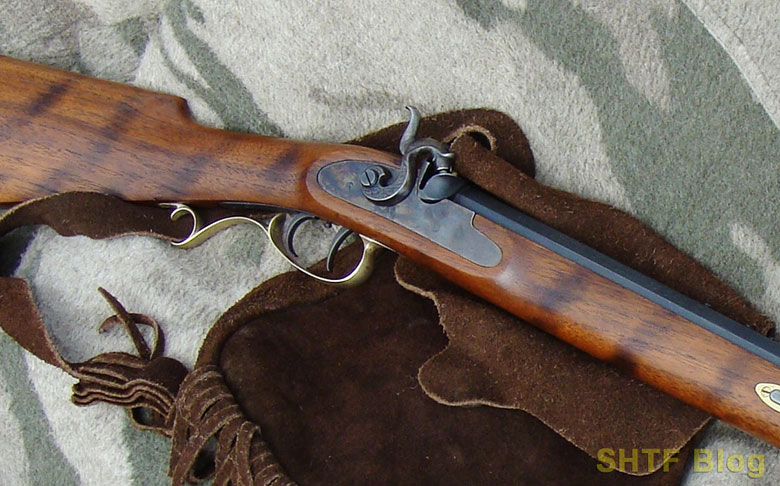
Parting Shots
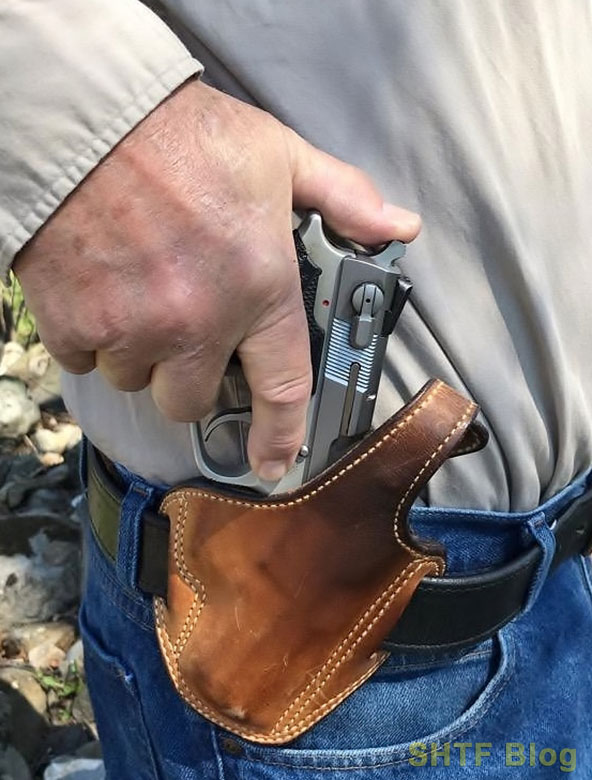
Regarding safety, we always added a fifth rule: Check every firearm you handle and, if you don’t know how it works, leave it alone! As for that all-important trigger discipline, proper placement of the digit can be reinforced during dry-fire sessions via repetitions of this simple exercise:
Off target – off trigger: Can be practiced from a defensive ready position; the scan mode.
On Target – on trigger: Adding a defensive slant, remain on target for a few seconds before each dismount. Then break out of tunnel vision and scan.
Regarding accuracy, we need to release the trigger in such a manner that the sight picture remains undisturbed before and during the shot!
Sounds simple and, in theory, it is! But then of course, we have reality. Of the several marksmanship fundamentals, trigger control is the hardest to teach, in part because it can’t be diagramed or demonstrated. Again, this explains why many shooters will articulate a well-delivered shot as one that “felt right”.
And consistent releases take time to master. Dive into Ninja mode too soon and demons will quickly reappear, typically manifested through a pronounced flinch. Other issues include improper stance or inconsistent grip, but most can be observed and corrected by a qualified coach. Which leads to this: Invest in some training!
In closing, some of the above is excerpted from an earlier post that covered handgun marksmanship and simple ways to improve accuracy.
For more about the subject of handguns, see my book Handguns: A Buyer’s and Shooter’s Guide.
- Markwith, Steve (Author)
- English (Publication Language)


